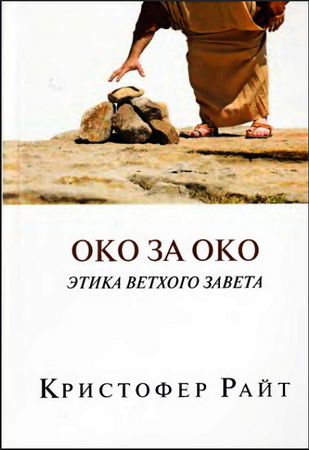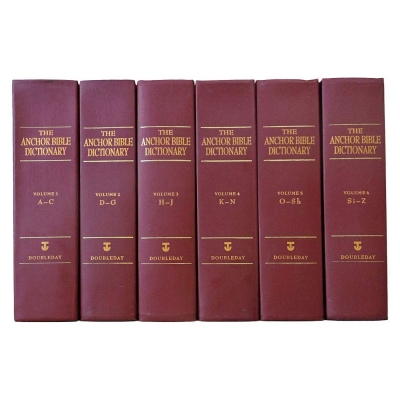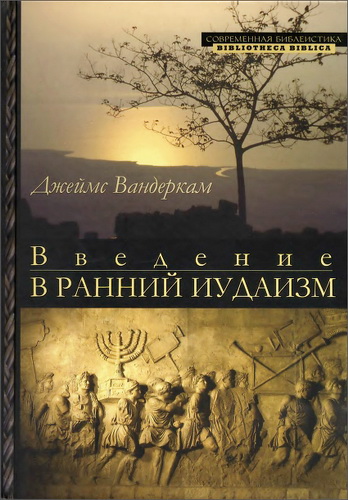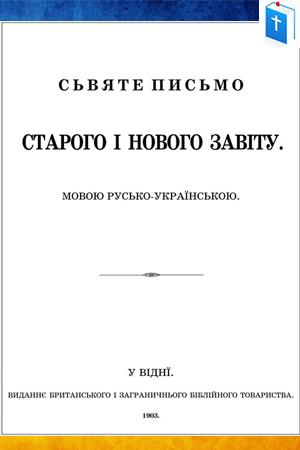
Freedman – The Anchor Bible Dictionary - модуль BibleQuote
David Noel Freedman – The Anchor Bible Dictionary
New York: Doubleday, 1992. – 6-volume set.
ISBN-10: 038542583X
ISBN-13: 978-0385425834
Every generation needs its own Dictionary of the Bible. Within its pages one can expect to find presented the essence of critical scholarship on subjects pertaining to the Bible, as those subjects are understood by students of that generation. Thus while such encyclopedic reference works provide a valuable service to their readers, in a larger sense they can never transcend the limits of their own historical contexts. In time they inevitably become outdated, and after a generation or so they can hope to achieve a sort of “second shelf life” as a valuable period piece, witness to where the field of biblical studies was at one point in its history.
It has been thirty years since the last major Bible dictionary appeared in America. The Biblical Theology movement was in its heyday, and a certain “consensus” on matters pertaining to the history and literature of both testaments had been established. When reviewing English-language Bible dictionaries of the time, one cannot help but notice the preponderance of word studies and of sweeping historical reconstructions that were characteristic of the field at midcentury. One critic at the time noted this and lamented that more attention was not being devoted to the critical issues of methods and assumptions. Baldly stated, it seems that scholarship at that time was more interested in presenting “the facts” than in considering critically how we know them to be “facts.”The emphasis in biblical studies has changed considerably since then. The mainstream American consensus that held in the 1950s and early ’60s unravelled during the 1970s. Sweeping historical reconstructions became increasingly rare as OT and NT scholars alike began to engage in often fierce debates over methods and assumptions (e.g., about the role and value of archaeology, and about the “literary” nature of biblical historiography).And when syntheses were attempted, one would very often find scholars moving beyond the venerable limits of the canon itself: the vocation of “biblical scholar” increasingly required one to be competent in dealing with a wide range of later, extrabiblical texts attesting to the complex emergence of early Judaism and early Christianity (or, as many would now insist, “early Judaisms and early Christianities”).
The Anchor Bible Dictionary is no less a product of its time. In some respects, the situation since the 1960s is now reversed: scholars now tend to be more preoccupied with considering how we know something to be a “fact” than in assembling those “facts” into a meaningful whole. Thus the overwhelming majority of major articles found in the following pages devotes a good deal of space to the basic epistemological question: “How do we know what we know about this topic?” One will be hard pressed to find in these pages any sort of sweeping historical synthesis that presumes a scholarly consensus. Scholarly consensus simply does not exist here at the end of the twentieth century.
Nevertheless in these six volumes there are still many new and refreshing insights one can discover about biblical texts, about histories and personalities referred to therein, about religious ideas and themes that find expression in its pages, about ancient Oriental and Hellenistic intellectual and cultural contexts that almost invariably lie just beneath the surface of the text (if not on the surface itself), and about the processes that helped to ensure the Bible’s central place in nascent Judaism and Christianity. In short, the ABD provides the scholarly world and the general public with an up-to-date and comprehensive treatment of all biblical subjects and topics. Our goal has been to provide an eminently readable and yet authoritative reference source for all readers of the Bible. To achieve this, we have assembled an international host of scholars—including prominent archaeologists, Assyriologists, Egyptologists, classicists, philosophers, and ancient historians—who have been selected on the basis of their expertise and special contributions to biblical scholarship. They come with diverse professional and confessional backgrounds, reflecting the growing pluralism and interdisciplinary interests of the field.
* * *
HABAIAH (PERSON) [Heb ḥŏbayyâ (חֳבַיָּה)]. Var. HOBAIAH. The head of a family of priests which is listed among those exiles of uncertain descent returning from Babylon to Jerusalem and Judah (Ezra 2:61 = Neh 7:63; 1 Esdr 5:38). This priestly family, along with two others, was excluded, at least temporarily, from the priesthood as being unclean for lack of documentation of their priestly lineage. The name is theophoric and derives from the Heb root ḥb which means “withdraw,” “hide.” The Qal impv., ḥăbı̂, is used in Isa 26:20 thus suggesting that this name was formed with the imperative, not an unusual occurrence, according to Albright (1928: 234), in hypocoristic formations. Since the Heb root ḥb˒, which in the causative means “hide,” is used in the sense of “protect” elsewhere (Josh 6:17, 25; 1 Kgs 18:4, 13; Isa 49:2), the name, which Noth (IPN, 178) understands as “Yahweh has hidden,” could also mean “Yahweh has protected” or “Protect, O Yahweh.” The several Greek transliterations of this name account for the variety of its spelling in translation: Ezra—hobaia (A), labeia (B), ōdouia (Luc); Neh—hebeia (A, B), abia (S, Luc); 1 Esdr—hobbeia (B), obdia (A), ōdouia (Luc).
Bibliography
Albright, W. F. 1928. The Egyptian Empire in Asia in the Twenty-first Century B.C. JPOS 8: 223–56.
Rodney H. Shearer
TABBATH (PLACE) [Heb ṭabbāt (טַבָּת)]. A site related to the Midianite flight after Gideon’s surprise attack (Judg 7:22). It has been identified with Ras Abu Tabat on the Wadi Kufrinje, halfway between Jabesh-gilead and Succoth. The name may be derived from the root ṭbr (BDB, 371–72), of uncertain meaning, but the noun ṭabbûr means “highest part, center.”
Gideon’s surprise attack routed the Midianites from the Jezreel Valley toward Zererah to the border of Abel-meholah by Tabbath and beyond. Gideon’s pursuit took him to Succoth, Penuel, and Jogbehah (Jubeihat, 15 miles SE of Penuel). The Midianites rallied near Karkor (Judg 8:10; Qarqar in the Wadi Sirhan, 150 miles from Jezreel).
Wright (WHAB, 65, map IX) shows Tabbath S of Jabesh-gilead and Abel-meholah and N of Zarethan and Succoth in the mountains E of the Jordan River. Cohen (IDB 4:497) identifies Tabbath with Ras Abu Tabat, which he postulates was the vicinity of Karkor and Heres. However, the Midianites did not retire and rally their forces near Tabbath, but at Karkor, which was fairly deep in the desert.
The attempt to locate Tabbath largely depends upon the locations of several others sites mentioned in the narrative: Beth-shittah, Zererah, Abel-meholah (Judg 7:22), and Succoth (Judg 8:4–8). Complicating the analysis is the fact that the identifications of these sites are also unclear.
The location of Beth-shittah is unknown, though Smick (1973: 81) and Aharoni (LBHG, 294 n. 222) say that both it and Abel-meholah were near fords of the Jordan. In Judg 7:24, Gideon calls on Ephraimites to capture the fords of the Jordan. Boling (Judges AB, 48, map 2) suggests Beth-shittah is on the E bank on the Wadi Kufrinje E of Zarethan, several miles from the Jordan River.
Zererah is usually identified with Zeredah and both are equated with Zarethan (though there is a Zeredah in Ephraim; 1 Kgs 11:26). Zarethan is often identified with Tell es-Sa˓idiyeh (M.R. 204186) on the Wadi Kufrinje, but an alternate location for Zarethan is to the S at Tell Umm Hamad (M.R. 205172) on the N bank of the Jabbok. Pritchard (1987: 96–97) identifies Zarethan with Sa˓idiyeh (however, the first end-paper map shows Zarethan on the S side of the Jabbok). Pritchard (1985: 3) and Tubb (1986) both say that the biblical identity of Tell es-Sa˓idiyeh is uncertain.
Abel-meholah has been located either 12 miles S of Beth-shan at Tell el-Hilu (M.R. 197192; Smick 1973: 168; Pritchard 1987: 99, 113; Boling Judges AB, 48) or at Tell Maqlub (M.R. 214201) on the Wadi Yabis E of Jabesh-gilead, 20 miles from Gideon’s camp at the spring of Harod. Aharoni (LBHG, 284 nn. 222, 313) notes the el-Hilu location for Abel-meholah, but says that it should be identified with Tell Abu Sus (M.R. 203197) where are two fords. Smick (1973: 168) also notes the possible location of the site at Tell el-Meqberah, half way between the Yabis and Kufringe wadis. Soggins (Judges ET, OTL, 144) suggests additionally, Tell Abu Sifri, on the W bank of the Jordan, 3.5 miles W of Wadi Yabis.
Succoth is mentioned as one of the towns through which Gideon passed in pursuit of the Midianites, which would imply that Tabbath should be located somewhere along the route from Jezreel to Succoth. Succoth is often identified with Tell Deir ˓Alla (M.R. 208178; Pritchard 1987: 247), N of the Jabbok, though Franken (EAEHL 1: 321–24) prefers to identify Succoth with Tell el-Ekhsas, 1.5 miles to the W of Deir ˓Alla (cf. Aharoni LBHG, 284 n. 224). Gideon’s route of pursuit then passed into the hill country to Penuel and into the desert.
The location of Tabbath is unclear since its identification relies heavily upon the location of these other sites, the location of which are matters of dispute, and the logic of which makes for some confusion in this narrative. If the Midianites fled up the Wadi Yabis (Abel-meholah = Tell Maqlub) or up the Wadi Kufrinje (Zererar = Tell es-Sa˓idiyeh and Tabbath = Ras Abu Tabat), one would expect Gideon to pursue them along one of these routes, but he took the Jabbok, which leads E and then turns S toward Amman. It thus gives access to the desert and the Wadi Sirhan. Perhaps in their panic from the surprise in Jezreel, the Midianites fled whichever way they thought was open to get back to the E desert, but Gideon may have known where they were going and took the more direct route by-passing the forests of Gilead. The Midianites, too, however, may have fled through the Jabbok wadi system, in which case Gideon’s route would have followed them.
Bibliography
Pritchard, J. B. 1985. Tell es-Sa˓idiyeh. Philadelphia.
Pritchard, J. B., ed. 1987. The Times Atlas of the Bible. London.
Smick, E. 1973. Archaeology of the Jordan Valley. Grand Rapids.
Tubb, J. N. 1986. Tell es-Sa˓idiyeh 1986: Interim Report of the Second Season of Excavations. ADAJ 30: 115–29.
Henry O. Thompson





Комментарии (1 комментарий)
Огромное спасибо брату Вадиму за этот невероятно ценный ресурс! Он служит достойным дополнением к коллекции лучших мировых словарей по библеистике и богословию, которыми постепенно пополняется библиотека BibleQuote на Эсхатосе.